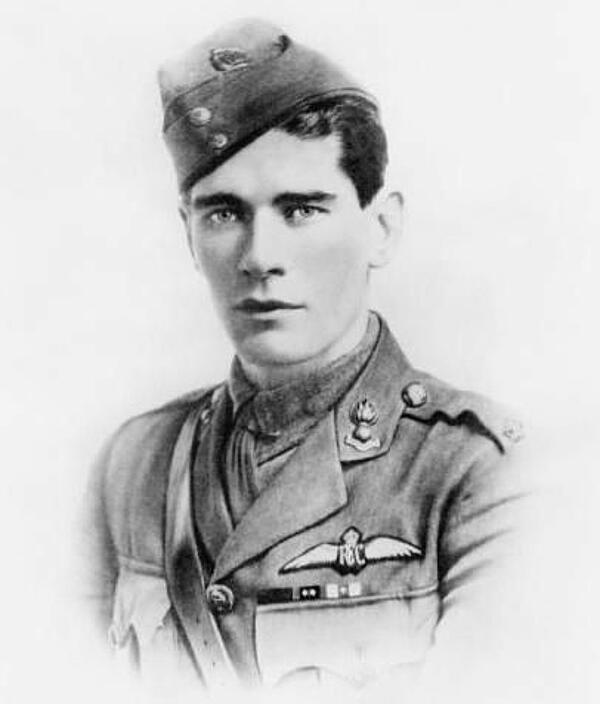Edward 'Mick' Mannock
Edward ‘Mick’ Mannock was one of the most famous flying ‘aces’ of World War One, credited with being the Royal Flying Corp’s most successful fighter pilot. Mannock also developed his ‘Fifteen Rules’ for flying in combat, which were still used in World War Two.
It is believed that Mick Mannock was born in Brighton on 24th May 1887 but there is no record of this and some believe he may have been born in Ireland. Having come through an unhappy childhood, Mick turned to socialism and started to speak at rallies for what would become the Labour Party.
When the war was declared, Mick was working in Turkey - which was allied with Germany - and he realised he as in danger. Before he could leave he was placed in solitary confinement in an internment camp but he was eventually allowed to return to England in April 1915 due to poor health.
Historians believe internment had a big impact on Mannock, who was previous a socialist but quickly signed up to the army upon his return from Turkey. However, the army felt he was debilitated by his experience and labelled him unfit for duty. Undeterred, Mannock transferred to the Royal Engineers in March 1916, and they were so impressed that they awarded him a commission and made him a second lieutenant.

Inspired by the tales of Albert Ball, Mannock transferred to the Royal Flying Corps in August 1916 and was instructed by future fellow ‘ace’ James McCudden. McCudden noted that Mannock was a natural flier who needed very little instruction or encouragement.
Mannock was sent to the Western Front in April 1917 and right from the start he felt he was in a position to give advice to pilots who had been there far longer than him. Despite this, he continued to fly well and on 7th June 1917 he made his first kill.
Despite his reputation as being arrogant, this was soon overshadowed by his new reputation as a highly skilled pilot. This was only aided on 16th August 1917 when he shot down four German planes in one day. The following day he shot down another two, and on 17th September he was awarded a Military Cross for his services. He was also awarded a bar to his MC the following month.
Despite his fame, Mannock felt it was important to engage with the ‘little person’ and made frequent visits to the front line to experience what it was like in the trenches. He also clashed frequently with senior commanders of the RFC regarding parachutes - while the German Air Service pilots were issued wit parachutes, the pilots in the RFC were not. Mannock did not agree but the senior officers argued that the using of parachute would dilute a pilot’s fighting spirit.
On 22nd July, Mannock was promoted to captain and became a flight commander. It was then that he decided it was important to instil certain rules about flying in combat into all the pilots and he created his ‘Fifteen Rules’ of combat flying. This became the bedrock for the RFC and the future pilots of the Royal Air Force.
On 20th July 1918, Mannock shot down his 58th kill, overtaking James McCudden and making him the highest scoring flying ace in World War One. His final total - over 70 - remains in question, however, as it’s not very easy to link a shot down aircraft with just one pilot.
Sadly, on 26th July 1918, Mannock was shot down by ground fire and killed. His body was found around 250m from his aircraft, which suggests he may have jumped. In recognition of his work, he was awarded a posthumous Victoria Cross.
MLA Citation/Reference
"Edward 'Mick' Mannock". HistoryLearning.com. 2026. Web.
